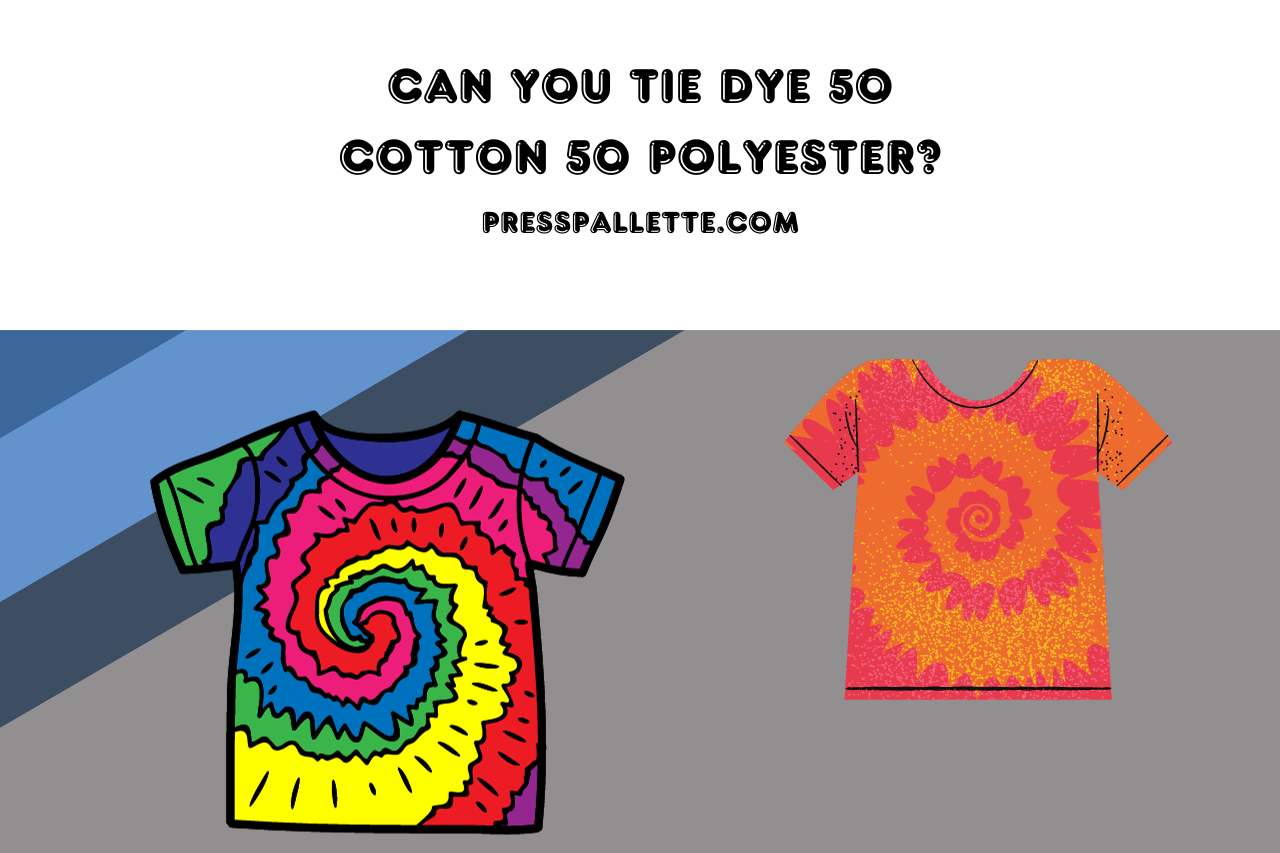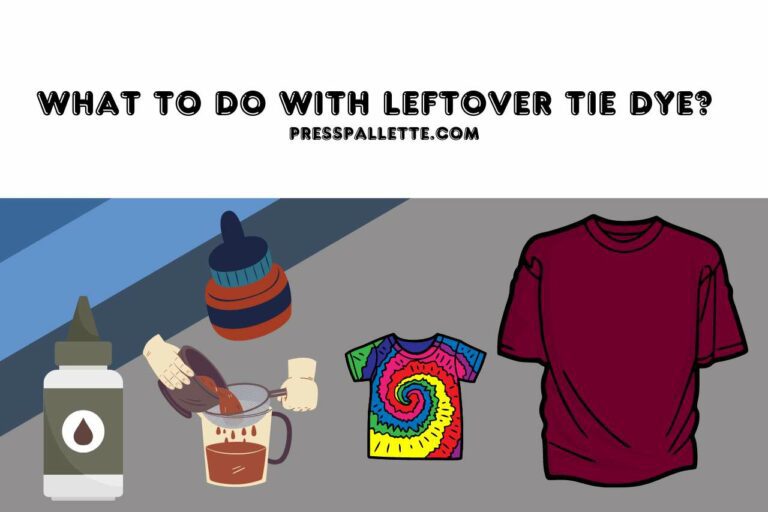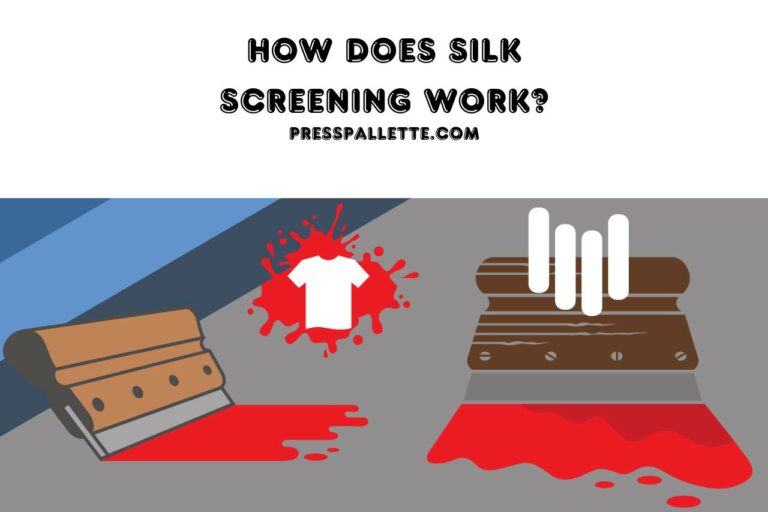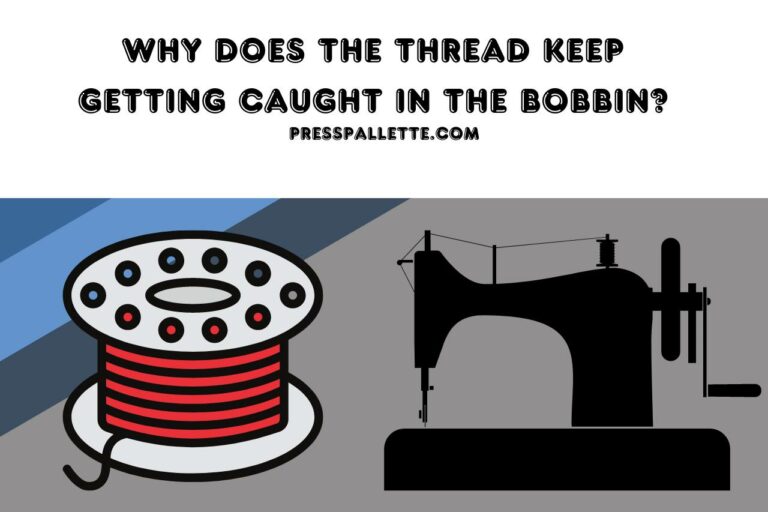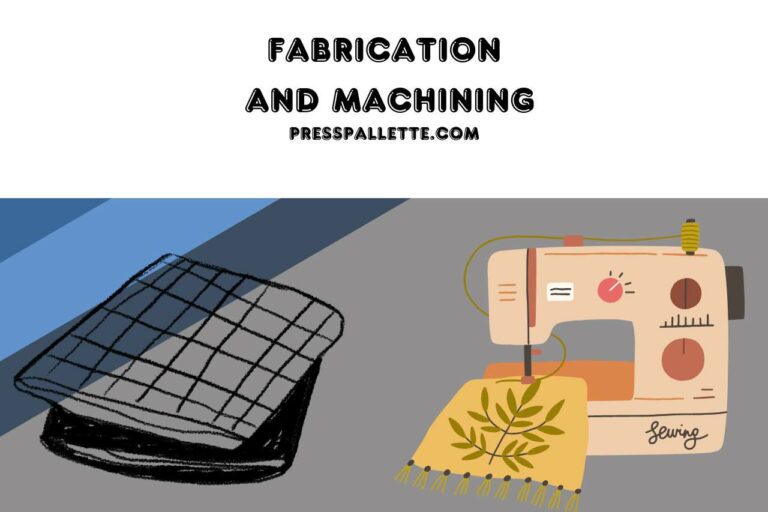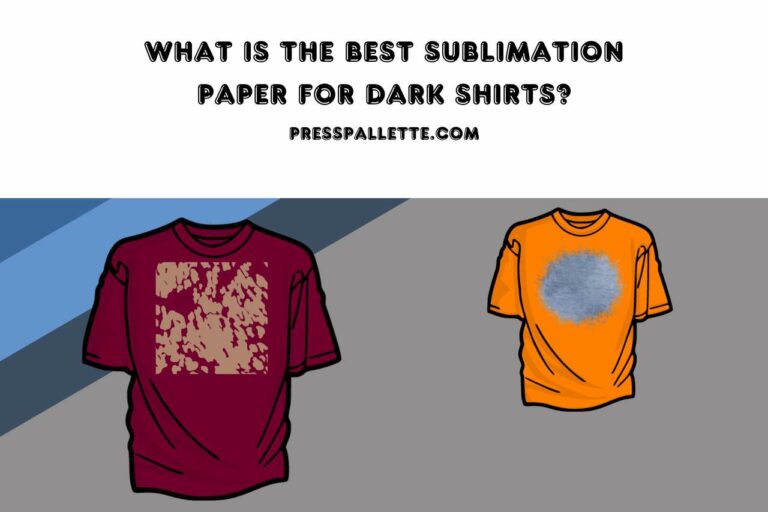Can you Tie Dye 50 Cotton 50 Polyester? (A How-To Guide)
Ever found yourself pondering, “Can you tie dye 50 cotton 50 polyester?” If so, you’re not alone. As the world of fabric dyeing grows increasingly popular, it’s an activity of craft technique and relatively more straightforward than other fabric styling methods. Many who are passionate about tie dye, both independent and large-scale producers, are experimenting with various fabric blends, seeking that perfect vibrancy and design. Our guide will help you understand the intricacies of tie-dyeing mixed fabrics, shedding light on best practices, dye choices, and ensuring dazzling results. Whether you’re a novice who is curious or a seasoned pro who dreams of stamping your authority in the fashion industry, there’s always more to uncover in the colorful realm of tie dye.
Can you Tie Dye 50 Cotton 50 Polyester?
Yes, you can tie dye a fabric blend of 50% cotton and 50% polyester. However, you probably will find the results to differ slightly from dyeing pure cotton. We’ll state the reason for that.
- Absorption Differences: Cotton, a natural fiber, absorbs dye more readily than polyester, a synthetic fiber. When you tie dye a 50/50 blend, you will see the cotton fibers generally soaking up more dye, leading to a more vibrant appearance. However, it isn’t the same with polyester.
- Subdued Polyester Reaction: The polyester strands won’t hold the dye as intensely, rendering a slightly faded or pastel look. This contrast can create a unique aesthetic feel for your shirt alongside the bright cotton colors paired with the subdued polyester shades.
- Dye Choice: Opting for dyes specifically labeled as suitable for blends or synthetic materials will help you achieve the best results. Standard cotton dyes might not bond as effectively to the polyester components, making your product less tempting to the eyes.
When attempting this mix, it’s crucial to understand how cotton and polyester behave when dyed. While it is possible to achieve beautiful results, the blend’s dual nature means it might not mirror the vibrancy of 100% cotton tie dyes. We recommend you conduct a patch test if you are unsure.
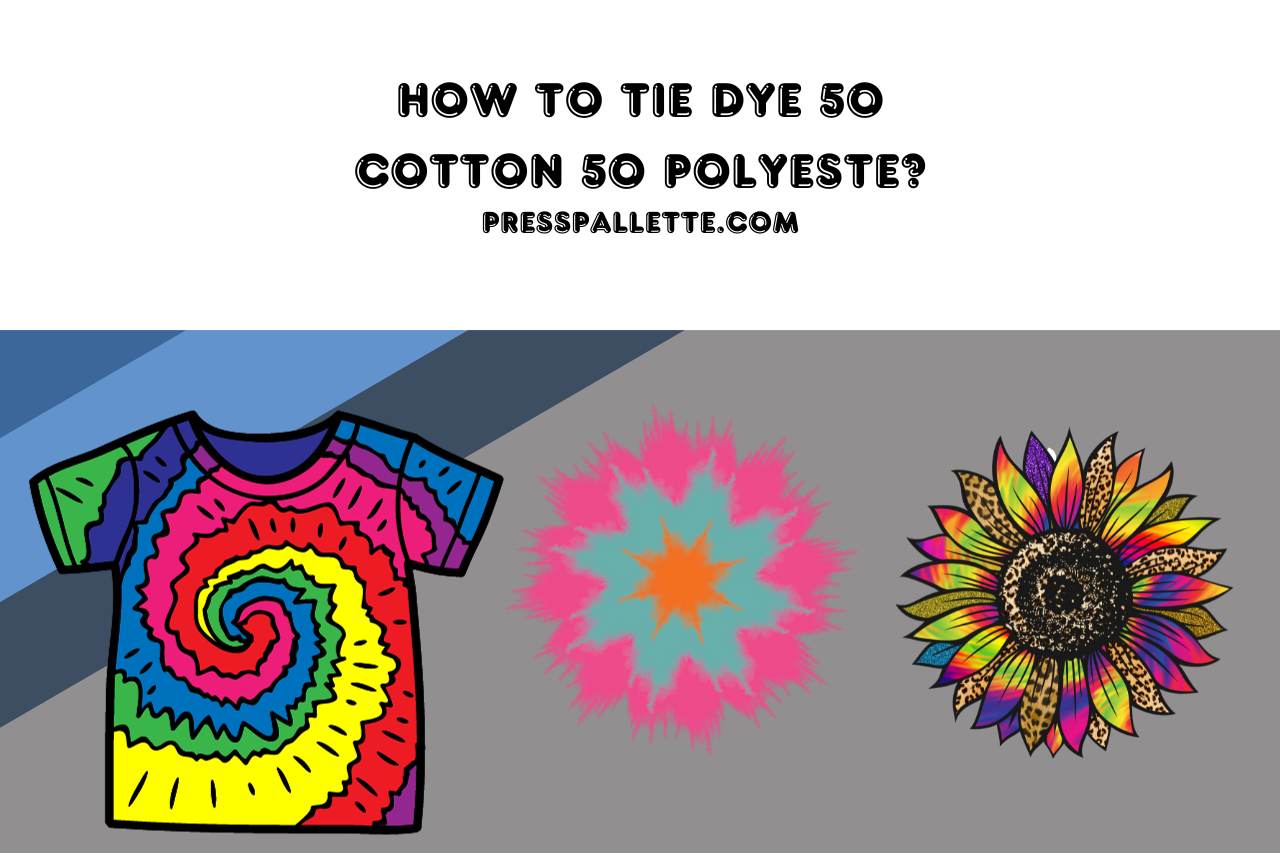
How to Tie Dye 50 Cotton 50 Polyester?
Tie-dyeing a 50% cotton and 50% polyester blend is a unique process, making sure that both fibers achieve the best color possible. We’ll give you a step-by-step guide to the whole process.
Step-by-Step Guide:
- Preparation: We think that beginning by washing your fabric without fabric softener is a good place to start your creative venture. This step ensures any manufacturing residues are removed, which might interfere with later steps like dye absorption.
- Wetting the Fabric: If you are going for a smoother gradient, wetting the fabric is a vital act. For more intense, contrasting colors, dried fabric is the way to go.
- Folding and Binding: Depending on your desired pattern (e.g., spiral, accordion, or bullseye), fold the fabric accordingly. Secure tightly with rubber bands or strings. This is the step to being creative. So try different patterns and place the rubber bands tightly.
- Choosing the Right Dye: Opt for a dye that would suit mixed materials or synthetics. This ensures that both cotton and polyester strands of your t-shirt achieve a balanced coloration. We speak with prior experience when we suggest Rit DyeMore is a suitable option for synthetic blends.
- Dye Application: Wear gloves to avoid staining your hands. Mix the dye as per package instructions. Apply generously, ensuring the dye penetrates deep into the folds for an even look.
- Setting the Dye: After applying the dye, carefully place the dyed fabric in a plastic bag and let it sit for at least 8 hours, preferably overnight. This waiting period allows the dye to set properly and forge the design on your fabric.
- Rinse and Wash: Under cold water, rinse the fabric until the water runs clear. You will see excess dye being washed away. Then, wash it in warm water with a mild detergent.
- Air Dry: To retain the vibrancy of the dye, it’s best to let the fabric dry in the air rather than exposing it to the sun.
Best Fabrics to Tie Dye
The best fabrics to tie dye are typically natural fibers due to their optimal dye absorption and vibrant color results. Let’s delve into the top choices for a successful tie-dye project.
- Cotton: A popular choice, cotton’s absorbent and breathable nature allows for brilliant color saturation, making it ideal for tie-dye enthusiasts.
- Silk: While delicate, silk can produce exceptionally vibrant results with the right dyes, offering a luxurious look and contrasting feel.
- Linen: Made from the flax plant, linen is another natural fiber that holds dye well. It offers a rustic aesthetic sense for your dyed garment.
- Rayon: A semi-synthetic material made from cellulose, rayon offers a soft texture and rich color results, rivaling that of cotton. You can use this material as an alternative to cotton.
- Bamboo: Sustainable and soft, bamboo fabrics also take tie-dye beautifully, leading to not only rich but also eco-friendly outcomes.
For the most vibrant and lasting results, always ensure you use dyes appropriate for your chosen fabric and follow the manufacturer’s instructions carefully. That way, you could get satisfying results regardless of the fabric you pick to style
What Dyes Can you Use to Blend Fabrics?
The dyes you can use to blend fabrics effectively include both natural and synthetic types designed to ensure optimal color adhesion. Let’s explore the most reliable options for the best results.
- Fiber Reactive Dyes: Mostly suitable for natural fibers, especially cotton, these dyes chemically bond with the fabric, providing lasting colors.
- Acid Dyes: Best for protein-based fibers like silk and wool, they provide bright, vivid shades.
- Disperse Dyes: These are formulated for synthetic fabrics like polyester, offering good colorfastness.
- Natural Dyes: Derived from plants, minerals, or insects, they’re eco-friendly and work well on a variety of fabrics, though colors might be softer and less vibrant.
- All-Purpose Dyes: A mix of dye types, they’re versatile and suitable for various fabric blends.
Choosing the appropriate dye type for your fabric blend will help you achieve desirable end products with vibrant and long-lasting colors, enhancing the life and aesthetics of your material.
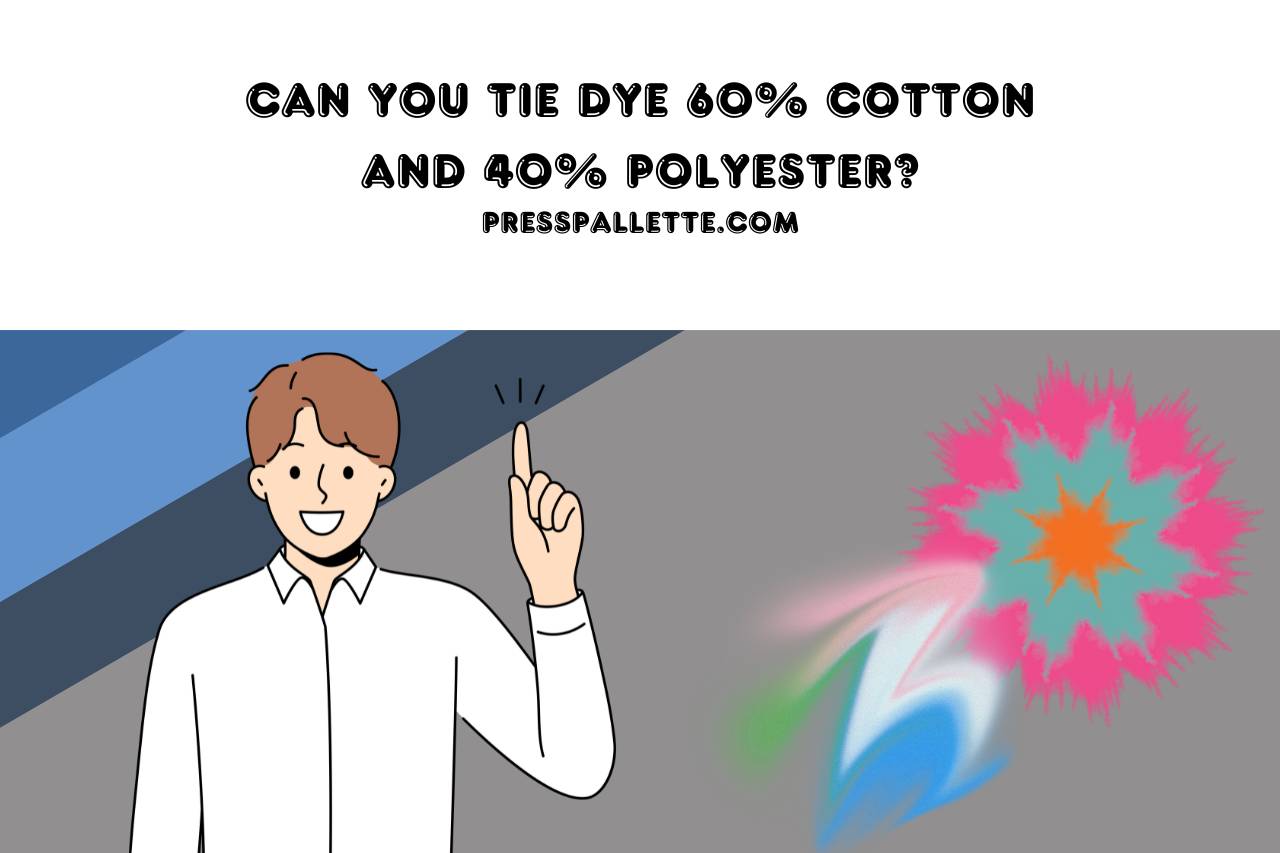
FAQs
Can you Tie Dye 60% Cotton and 40% Polyester?
Yes, you can tie dye a fabric that is 60% cotton and 40% polyester, but with some considerations. As we already mentioned above, the cotton part of the fabric will absorb traditional tie dye more effectively, resulting in vibrant patterns.
On the other hand, the polyester component might not dye as vibrantly because standard tie dyes are primarily water-based and best suited for natural fibers. For optimal results, you should consider using a dye that’s formulated for synthetic fabrics or a combination of dyes to ensure both the cotton and polyester parts attain a balanced, harmonious pattern.
Pre-washing the fabric and following proper dyeing instructions is fundamental in further enhancing the final look.
Can you Tie Dye 65% Cotton and 35% Polyester?
Yes, you can tie dye a blend of 65% cotton and 35% polyester, though there are nuances to consider. With 65% cotton content, the fabric will predominantly absorb the tie dye, producing vivid designs.
However, the 35% polyester might yield a slightly subdued hue since typical tie dyes are designed primarily for natural fibers.
To get the best results, opt for dyes that cater to both natural and synthetic fibers. But compared to 50% cotton and 50% polyester, the colours will look much more vibrant for this variant because of the higher cotton ratio.
The type of colour and fabric you choose for tie dying solely depends on you. We helped you understand how different fabrics absorb dye differently. Some people like tie dye polyester shirts even if polyester’s absorption capability is relatively low.
Use our guide as a helping hand, but select your desired fabric type according to your own wishes and produce wonders.
Watch this one,
Video Credits – AllDayShirts
You May Also Like

